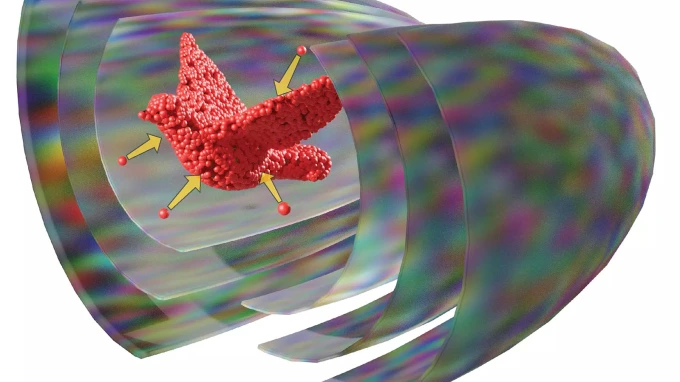Image: BigThink.com/German scientists 3D print objects with “acoustic holograms”
Acoustic holograms can make the "Santa Claus" machine possible.
"The team was able to use their technique to print 3D objects from solid microparticles, hydrogel beads, and even biological cells — contact-free (bar the sound waves, of course)". (BigThink.com/German scientists 3D print objects with “acoustic holograms)
The acoustic pressure systems can use to model metals or ceramics. In the most conventional versions, the LRAD systems can use air as the hammer that models the ceramics or even metals and carbon fiber.
Acoustic holograms are 3D-shaped pressure fields created by high-accurate sound waves. Those pressure fields act like hydraulic presses. And they can create physical merchandise by pressing the plastic foam or plastic fog created by using high-temperature systems.
The acoustic holograms can make things even from metal dust or metal vapor in extremely high temperatures. In some visions, laser rays are vaporizing metals of carbon fibers. And then the pressure system starts to press that vapor. The system creates acoustic holograms by using synchronized extremely small-size LRAD systems. That the 3D printing systems can make the right pressure shape.
But nanotechnology needs even more fundamental tools.
Most nanomachines are created by using carbon. In modern nanotechnical systems, the laser and highly accurate electron rays are used as billiard sticks that push carbon dioxide molecules into the right positions. The carbon and oxygen atoms are creating new types of materials that can be used in nanorobots.
The carbon molecule chains can use in the shell or structures in nanomachines. The nanomachines can form larger structures. And in some visions, the nanomachines can use to create metal plates that fix themselves automatically.
AI-controlled systems have no limits. They can create small protein fibers. Those proteins can use as nanomachines by connecting some enzymes to them. In some wildest visions, those proteins are covered by magnesite, and they can operate as miniature mass memories that control nano-sized robots.
In those cases, protein acts like a miniature tape drive. That can control microchips. And those microchips can drive cell-size cyborgs to the right positions. Those cyborg cells can be macrophages that clean blood systems. In some other versions, the artificial DNA controls those systems. Maybe somewhere in the future. The living neurons can control nanomachines. That allows us to create a structure that can be as highly intelligent as humans.
The acoustic systems can protect the manufacturing process of those machines. They can protect the platforms that might hover in the chamber where the electrons and photons are pushing the nanomachines in the right positions. Nanomachines and nanotechnology are tools that have no limits.
Some nanomachines are not even work in high temperatures. Those low-temperature operating systems can hover above the superconducting layer. And they can use to move other molecules. But maybe in the future, those nanorobots can participate the missions to frozen moons like Triton at the solar system's edge.
https://bigthink.com/hard-science/3d-printing-acoustic-holograms/
https://scitechdaily.com/limitless-possibilities-ai-technology-generates-original-proteins-from-scratch/
https://scitechdaily.com/electronics-breakthrough-scientists-generate-shortest-electron-burst-yet/
https://scitechdaily.com/putting-carbon-dioxide-to-good-scientists-use-electrochemistry-to-convert-carbon-to-useful-molecules/
https://shorttextsofoldscholars.blogspot.com/





No comments:
Post a Comment
Note: Only a member of this blog may post a comment.